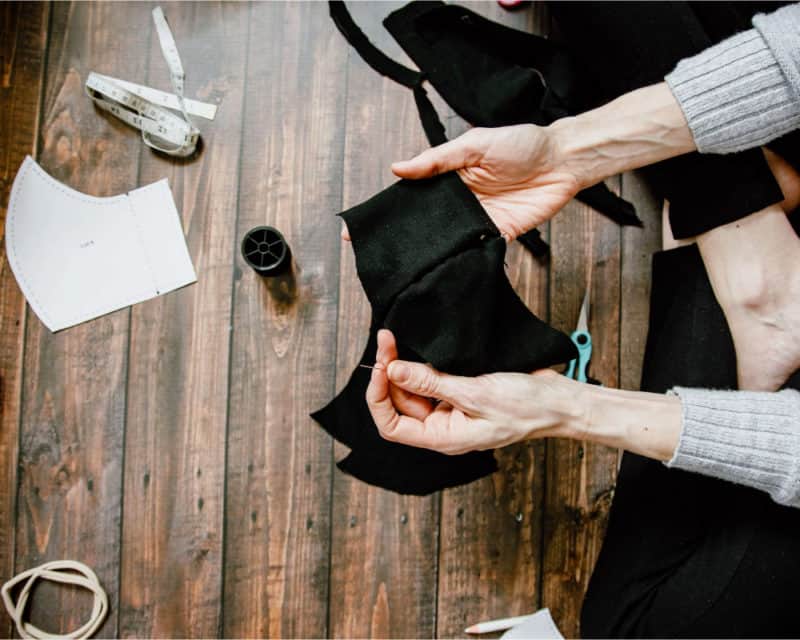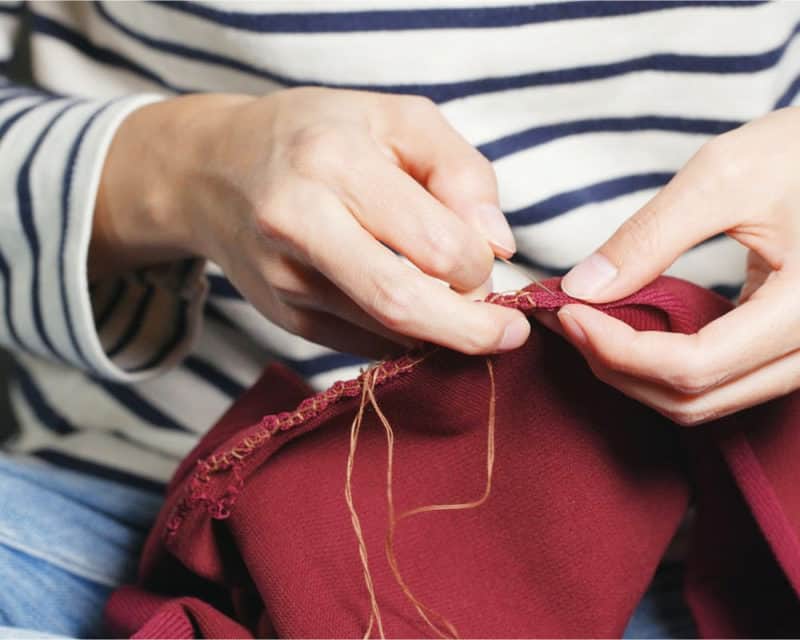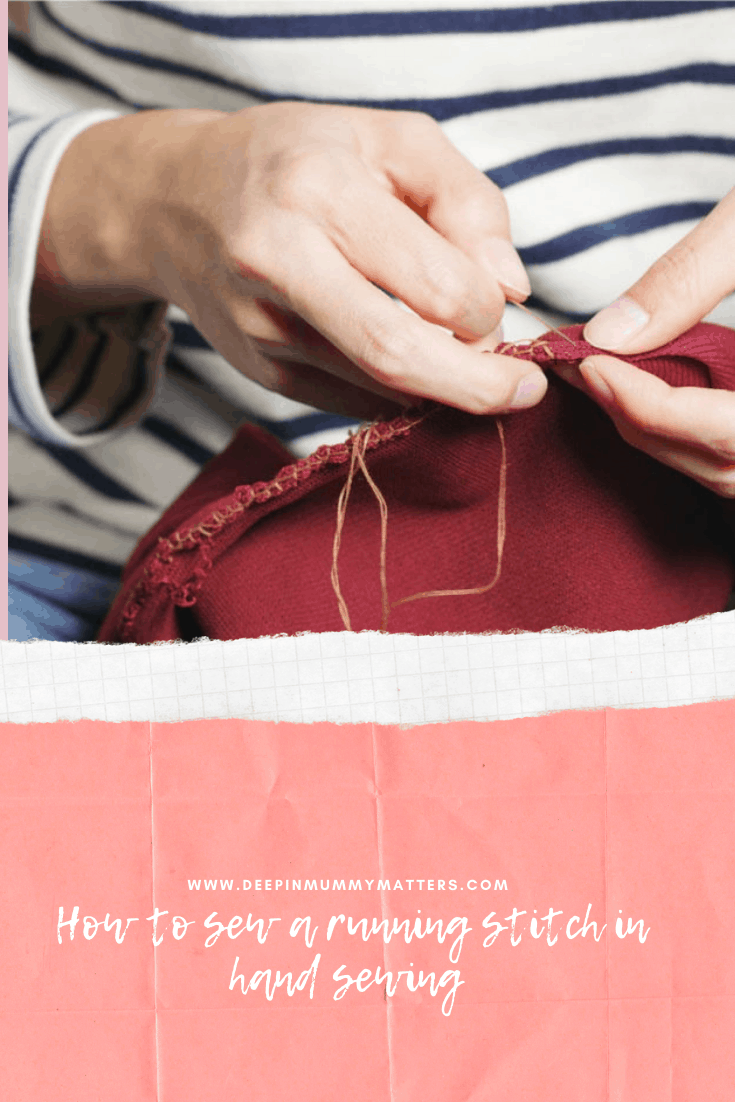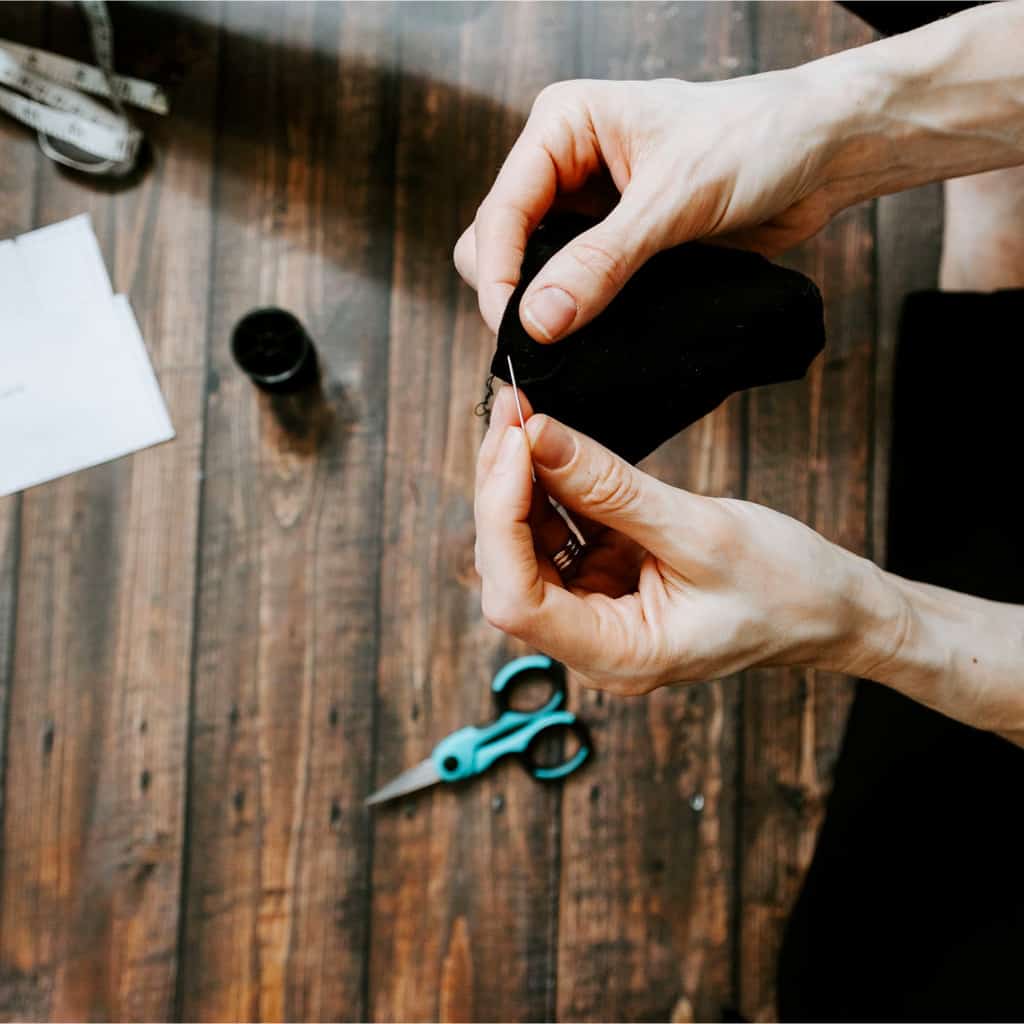If you have been wondering how to sew a running stitch in hand sewing, you should consider a few things to be successful. Indeed, a hand-sewn running stitch doesn’t need to be difficult to accomplish, and by following our advice, you’ll hopefully have the best success and results with your running stitches.
When to Use a Running Stitch

There are multiple times when you might want to consider using a running stitch, especially since they are a quick fix for many issues, even without a sewing machine!
Running stitches are fast to make and just as fast to remove, making them common choices for quick fixes. Plus, because they are simple and neat, they are also highly effective for small projects and simple tasks. They are also ideal for embroidery and decorative purposes.
While running stitches are not necessarily a highly durable form of stitching, their simplicity and neat nature make them suitable for many small-scale, lightweight applications. Plus, their durability can be increased by making the stitches small and keeping them closer together.
How to Sew a Running Stitch by Hand
Running stitches are straightforward to do, even with hand sewing! As usual, you should start by threading the needle carefully and knotting the thread to stop it slipping, after which point you should anchor the knot. The knot should be anchored on the inside of the material from the starting point of your stitching.
If you’re sewing multiple layers of fabric, we recommend pinning them to keep things aligned and secure. Then, thread the needle through the fabric from underneath to the top of your chosen material. Weave the needle through the fabric and then repeat until you have completed stitching the entire area in question.
It really is that simple! So, what’s stopping you – running stitches are super easy, neat, and quick, making them excellent for so many applications.
A Word of Caution

We’ve clarified how to create a running stitch, and with just a few simple steps involved, it’s clear to see how easy it is! However, we need to reiterate that running stitches are not overly secure types of stitch, and they can easily snag. If the stitch should snag, this will pucker the material. Meanwhile, a break to the running stitch will unravel all of the work.
So, if you want a more secure type of stitch, you may want to consider a backstitch or slip stitch for greater durability. Alternatively, consider making your stitches as small and as close together as possible for a more durable stitch. This is essentially how sewing machines work, ironically – sewing machines can create a tiny stitch that likely isn’t possible to replicate easily by hand.
For an even quicker fix that also boosts the durability of your running stitch, you could consider using the best handheld sewing machine to make sewing running stitches a breeze!
Conclusion
If you’ve been looking for a stitching method that’s quick and effective, a running stitch could be just what you need. They’re easy to do and look great, but be aware that they are not overly durable and prone to breaking.


